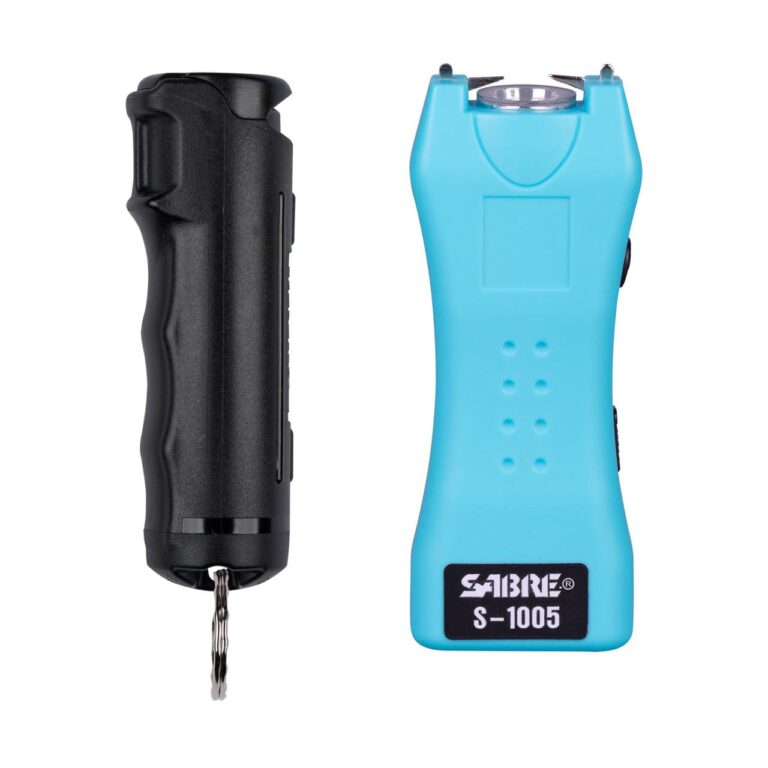Table of Contents
- Understanding How Stun Guns Neutralize Threats in Real-World Encounters
- Evaluating Stun Gun Limitations and Factors That Affect Performance
- Best Practices for Using Stun Guns Safely and Effectively in Self-Defense
- Legal Considerations and Responsible Ownership of Stun Guns
- Concluding Remarks
Understanding How Stun Guns Neutralize Threats in Real-World Encounters
When faced with an immediate threat, stun guns act by delivering a high-voltage, low-current electrical shock that disrupts the target’s neuromuscular system. This sudden jolt interferes with the attacker’s muscle control, often causing temporary paralysis or intense pain, giving the victim crucial seconds to escape. Unlike firearms or knives, stun guns are designed to incapacitate without causing permanent harm, making them a preferred choice for many seeking non-lethal self-defense options. Their effectiveness hinges on direct contact and the ability to maintain the electrical connection long enough to create sufficient neuromuscular incapacitation.
Real-world scenarios reveal that stun guns excel in situations where quick reaction and control are necessary. However, their success depends on several factors, such as:
- Proximity: The user must be close enough to make effective contact.
- Target Placement: Contact on major muscle groups or nerve clusters yields maximum effect.
- Environmental Conditions: Wet or insulated clothing can reduce electrical conductivity.
- Attacker’s State: Intoxication or adrenaline can sometimes mitigate stun gun effects.
Evaluating Stun Gun Limitations and Factors That Affect Performance
While stun guns are popular tools for self-defense, their effectiveness is not absolute and can be influenced by various factors. One of the primary limitations is the electrical conductivity of the target’s skin. Dry or thick clothing can significantly reduce the stun gun’s ability to deliver an effective charge, potentially prolonging the time it takes to incapacitate an attacker. Additionally, the device’s battery life and maintenance state play a critical role-low charge levels often result in weaker shocks that fall short in high-stress situations.
Environmental conditions also pose challenges for stun gun performance. For instance, adverse weather such as rain or high humidity can interfere with the electrical current flow. Moreover, the attacker’s body size and pain tolerance heavily influence overall effectiveness. Larger individuals or those under the influence of substances may not respond as expected, requiring multiple discharges. Understanding these nuanced limitations helps users set realistic expectations and reinforces the importance of combining stun guns with situational awareness and other defense strategies.
Best Practices for Using Stun Guns Safely and Effectively in Self-Defense
To maximize both safety and effectiveness when deploying a stun gun in a self-defense scenario, it’s crucial to maintain a clear understanding of your device’s operational limits. Always inspect your stun gun regularly to ensure it’s fully charged and functional; there’s no room for surprises in an emergency. Carry your stun gun within easy reach, preferably clipped to a belt or stored in a designated pocket that allows rapid access under stress. Remember, proper stance and positioning during use are essential-aiming at the attacker’s torso or thighs rather than extremities increases the likelihood of immediate incapacitation. Never use the stun gun as a prolonged weapon; a few seconds of contact is usually sufficient to neutralize a threat.
- Practice regularly: Familiarize yourself with your stun gun’s activation mechanism while respecting safety protocols to avoid accidental discharges.
- Stay aware of local laws: Regulations regarding stun gun use vary; understanding these legal frameworks protects you from unintended legal consequences.
- Use it as a deterrent: Often the mere sight or sound of a stun gun can defuse aggression without actual deployment.
- Combine with situational awareness: Always be alert to your surroundings, so you can react promptly and make decisions grounded in context.
Legal Considerations and Responsible Ownership of Stun Guns
Before purchasing or carrying a stun gun, it’s essential to understand the legal landscape that governs its use. Laws can vary significantly between countries, states, and even cities, with some jurisdictions requiring permits or restricting where and how stun guns can be carried. Ignorance of these regulations can lead to serious legal consequences, including fines, confiscation, or criminal charges. To stay compliant, always:
- Research local and state laws thoroughly before acquiring a stun gun.
- Confirm if permits or registration are necessary for possession or carry.
- Understand prohibited areas such as schools, government buildings, and airports.
Responsible ownership goes beyond legality-it’s about safety and ethical use. A stun gun should be considered a last-resort self-defense tool, utilized only when there is a legitimate threat to personal safety. Users must familiarize themselves with operational guidelines and practice restraint, emphasizing de-escalation whenever possible. Key practices include:
- Storing the device securely away from children or unauthorized users.
- Engaging in training sessions to ensure confident and effective handling.
- Understanding the device’s limitations and avoiding overreliance on it as a sole means of protection.
Concluding Remarks
In conclusion, while stun guns can be a valuable tool for self-defense, their effectiveness largely depends on proper usage, situational awareness, and understanding their limitations. Real-life encounters are unpredictable, and no single device guarantees safety. However, when combined with self-defense training and a mindful approach to personal security, stun guns can offer an added layer of protection. As always, staying informed and prepared remains the best strategy for facing potential threats confidently and safely.Check Our Other Blogs
- StunGun – Your Trusted Source for Stun Guns, Laws, and Self-Defense Tips
- PepperSprayLaws – Your Trusted Resource for Pepper Spray Information
- StunGunLaws – Your Trusted Guide to Stun Gun Legality and Safety



